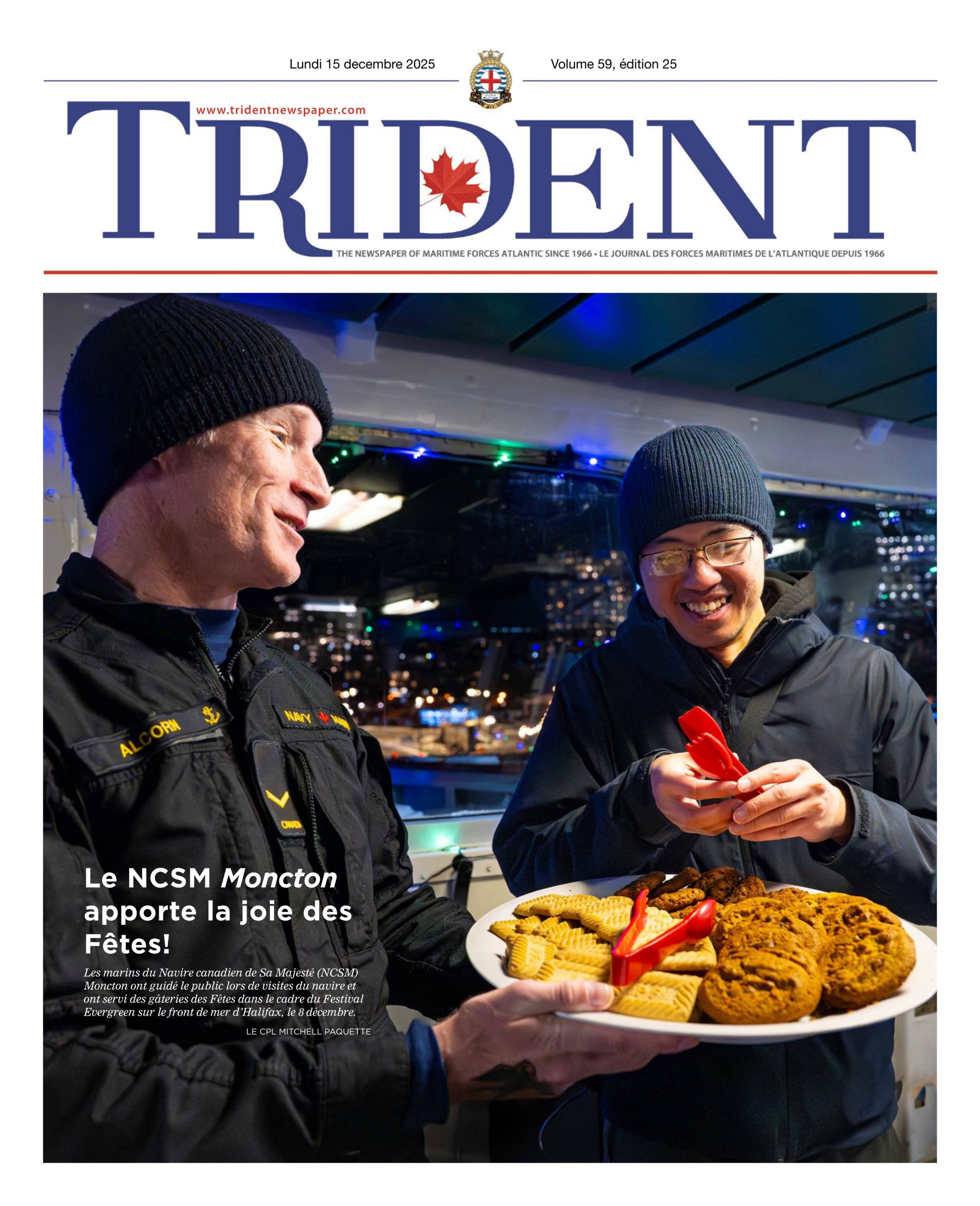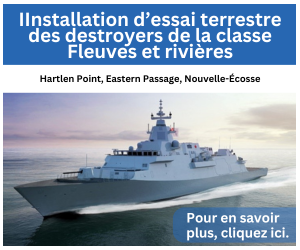Par l'équipe du Trident,
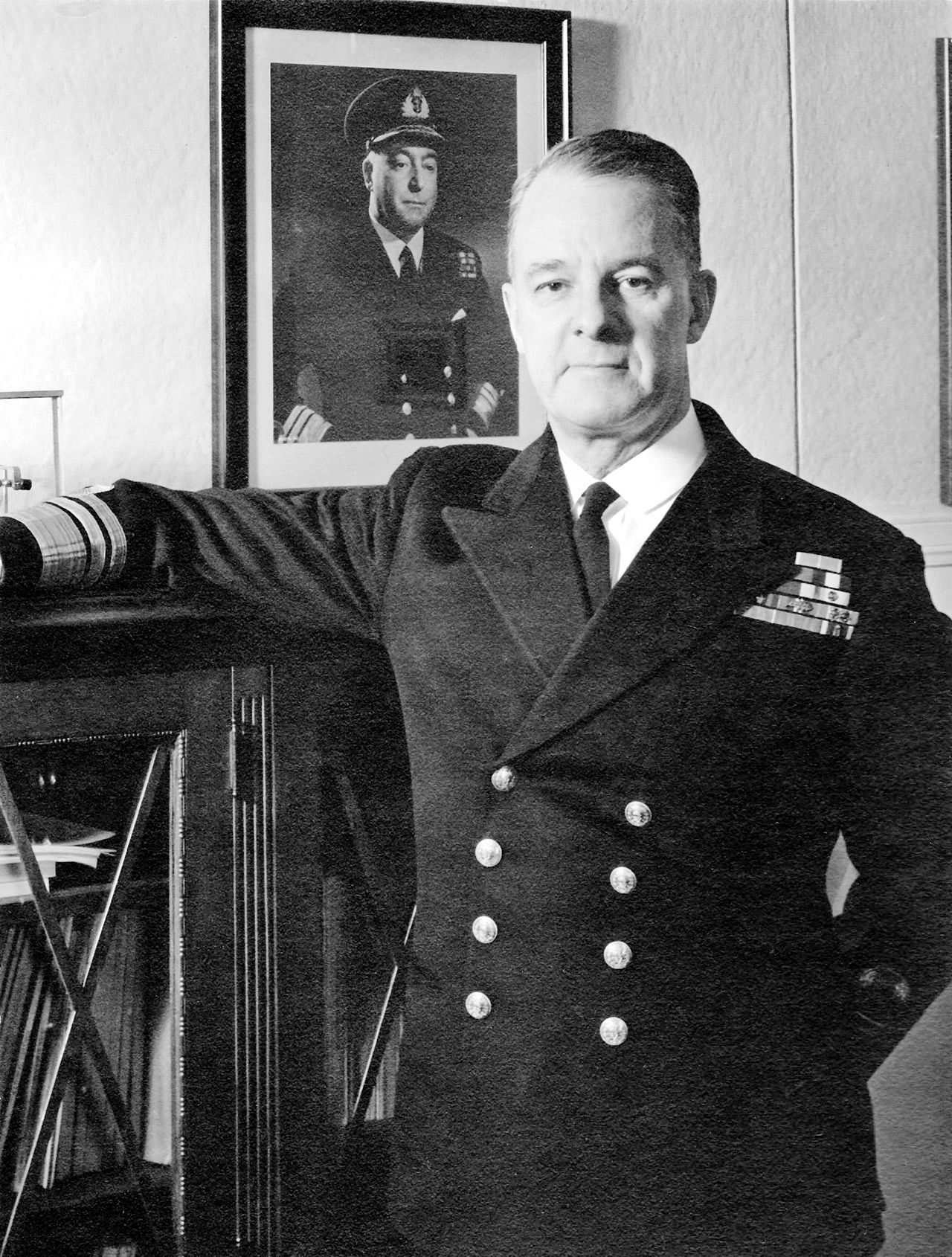
MND
Since the inception of the Royal Canadian Navy in 1911, a number of different conventions have been used to name ships that are accepted into the service. Some, like the Second World War armed yacht HMCS Elk ou le Orca-class training vessels, have been named after animals. Many have taken names that honour the First Nations of Canada, like the multiple ships named Iroquois, Athabaskan, et Algonquin. In recent years, the RCN has taken to naming its newly-commissioned ships after Canadian cities and towns, as has been the case with the Halifax-class frigates and the Kingston-class Maritime Coastal Defence Vessels.
What has not been tradition for Canada’s Navy, however, is to name its vessels after people. It’s long been a practice for our US Navy neighbours to the south, as well as for Canadian Coast Guard ships – but it wasn’t until the fall of 2014 when it was announced the next class of RCN ships, the Arctic and Offshore Patrol Vessels, would be the first to take their namesakes from influential Canadian Naval Personnel. The first of this new class of ships, set to be delivered to the RCN later this year, is named after Vice-Admiral Harry George DeWolf CBE, DSO, DSC, CD.
VAdm DeWolf grew up sailing in Halifax Harbour and the Bedford Basin, joined the Navy in 1918, and rose through the ranks to become the most decorated Canadian officer of the Second World War and the eighth commander of Canada’s naval service.
“Known as a brilliant navigator and ship handler from the time he was a junior officer, DeWolf’s experiences in the destroyer’s St. Laurent et Haida during the Second World War lifted him to legendary status within the Navy,” wrote RCN historian Michael Whitby in 2006.
“He was a natural competitor, but none of his compatriots doubted that his rise to the top was due to anything but skill, honesty and hard work.”
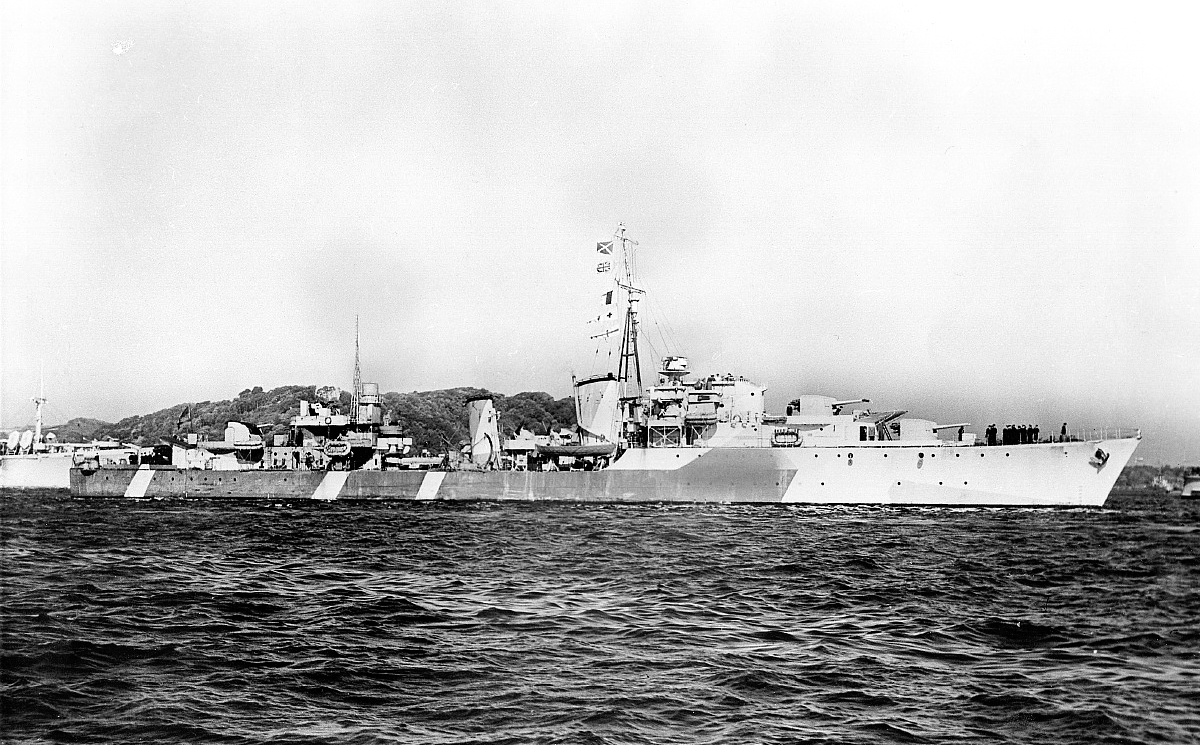
MND
VAdm DeWolf’s command of those two destroyers during wartime is the most often-referenced time in his career, and for good reason. After taking command of St. Laurent in 1939, VAdm DeWolf led the ship as it fired the RCN’s first shots of the war during a rescue of British and French troops following the fall of France. St. Laurent also led the rescue of more than 800 survivors of the SS Arandora Star, a British passenger ship that was torpedoed by U-boat U-47 in July of 1940. The details of the valiant rescue effort involve oil-soaked survivors being hauled in on scramble nets as the ship sat like a sitting duck in waters heavy with enemy presence, and Vadm DeWolf earned a mention in dispatches for his role.
Later, in command of HMCS Haida from August 1943 to September 1944, VAdm DeWolf helped the ship earn its moniker of “the Fightingest Ship in the Canadian Navy,” and also developed his own nickname, Hard-Over Harry, for his aggressive ship maneuvering and tight turns to avoid fire during nighttime battles.
Haida was a newly-commissioned ship when he took command, and with a relatively inexperienced crew, yet they found numerous successes in battle after an initial quiet period as a convoy escort, and Haida was credited with sinking at least nine enemy ships and submarines through VAdm DeWolf’s year with the ship. Notable actions mainly took place as part of the 10th Destroyer Flotilla, and included the sinking of the destroyer T-29 on April 25, 1944 alongside HMCS Athabaskan, as well as battle with the Narvik-class destroyer Z-32 on June 8 into June 9, when Haida en Huron forced the ship to run aground on Ile de Bas off France after a long night of gunfire. Additional vessels that fell prey to VAdm DeWolf and his crew in 1944 were the destroyer ZH1(June 9), U-boat U971(June 24), and Minesweeper M486 (August 6), among others.
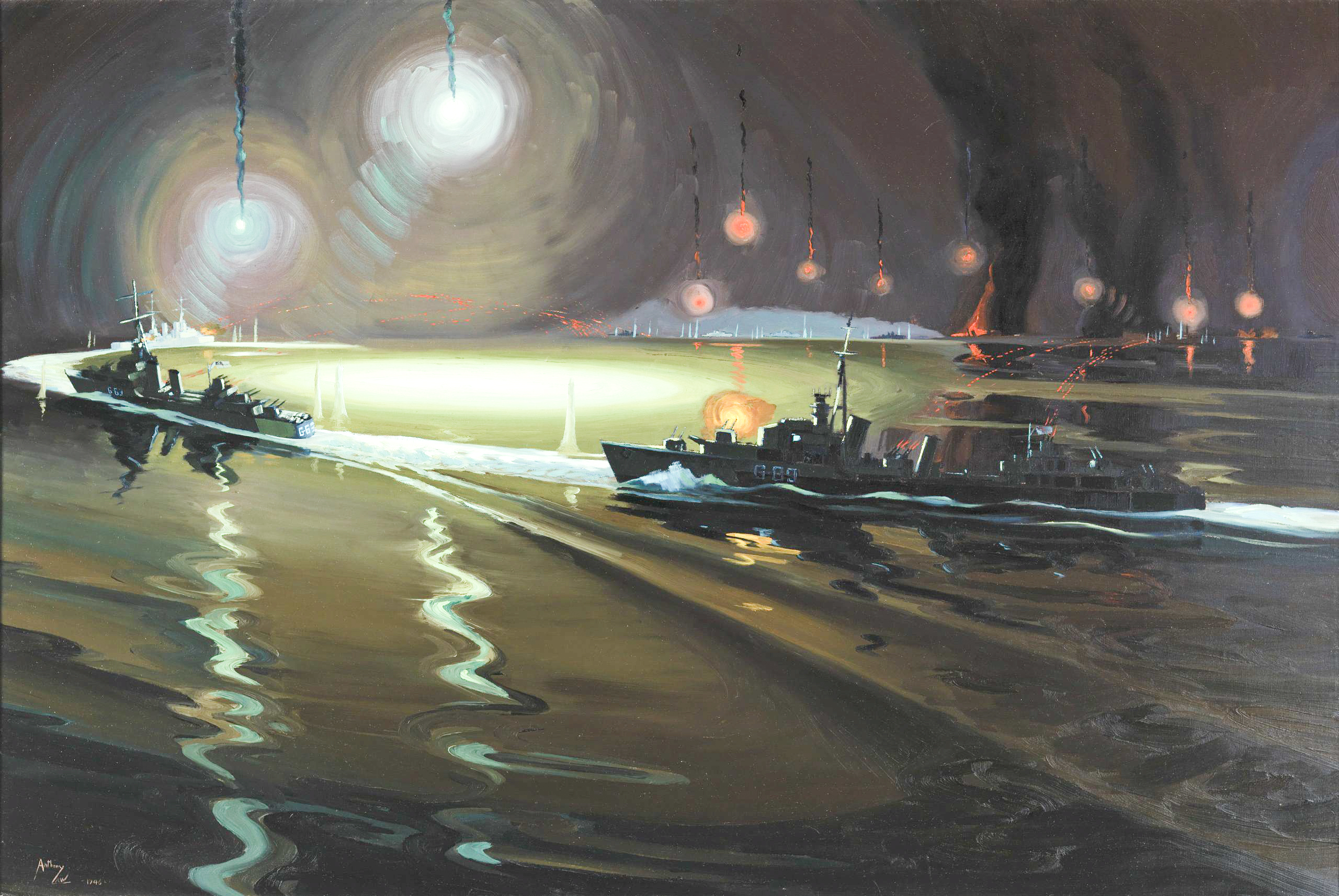
Haida under VAdm DeWolf’s command was also involved in a dramatic rescue effort after encountering two Elbing-class German torpedo boats in the early morning of April 29, 1944. Haida opened fire on the enemy alongside sister ship HMCS Athabaskan, which was soon struck by a torpedo on her starboard side. As Athabaskan’s crew fought to save the ship, fires caused the ammunition magazine to explode, hastening the sinking and tossing hundreds of men into the frigid water. Haida continued to fight off the enemy, while 42 survivors managed to scramble aboard, but would be forced to head back to safety before daybreak with men still in the water. In the end, 127 from Athabaskan died, while 85 more were picked up by German ship T-24. VAdm DeWolf wrote about the encounter following the war, regretting the loss of Athabaskan, but noting that she had been avenged many times over through the summer of 1944.
Of course, these years at sea during wartime form only a small part of VAdm DeWolf’s 42-year RCN career. Before he earned his reputation for leading ships into battle, he was well-respected as a staff officer – playing a prominent role in procurement while at NDHQ from 1935 to 1937, and later planning blockade operations during the Spanish Civil War while serving as Staff Officer (Operations) with the 1st Cruise Squadron of the British Mediterranean Fleet. He gained further accolades as a staff officer in Halifax prior to taking command of Haida, where he was heavily involved in planning convoy escort operations.
As the Second World War came to an end, he was posted to Ottawa as Assistant Chief of the Naval Staff, followed by command appointments to the aircraft carriers HMCS Warrior en Magnificent in 1947, and his eventual promotion to Rear Admiral in 1948. Flag appointments then included Commander Maritime Forces Pacific, Vice Chief of the Naval Staff, and advisor to the Canadian ambassador in Washington.
In 1956, following his final promotion, VAdm DeWolf became Chief of the Naval Staff, leading the RCN through the next four years over a period of financial crunch and evolving technologies.
“DeWolf’s firm hand steadied the Navy’s course through the late 1950s,” wrote Marc Milner in his book Canada’s Navy: The First Century. His tenure would see the Navy’s budget decline by nearly 40 percent, while a number of new ships and aircraft were coming online and Cold War threats were rising. The situation called for tough decisions, including discarding ships and abandoning the idea of a second aircraft carrier alongside the newly commissioned Bonaventure, along with sacrificing other capabilities, in order to operate within fiscal realities. While it was a difficult time for the RCN, VAdm DeWolf maintained his strong reputation and became known as an effective and strategic leader during his appointment as CNS.
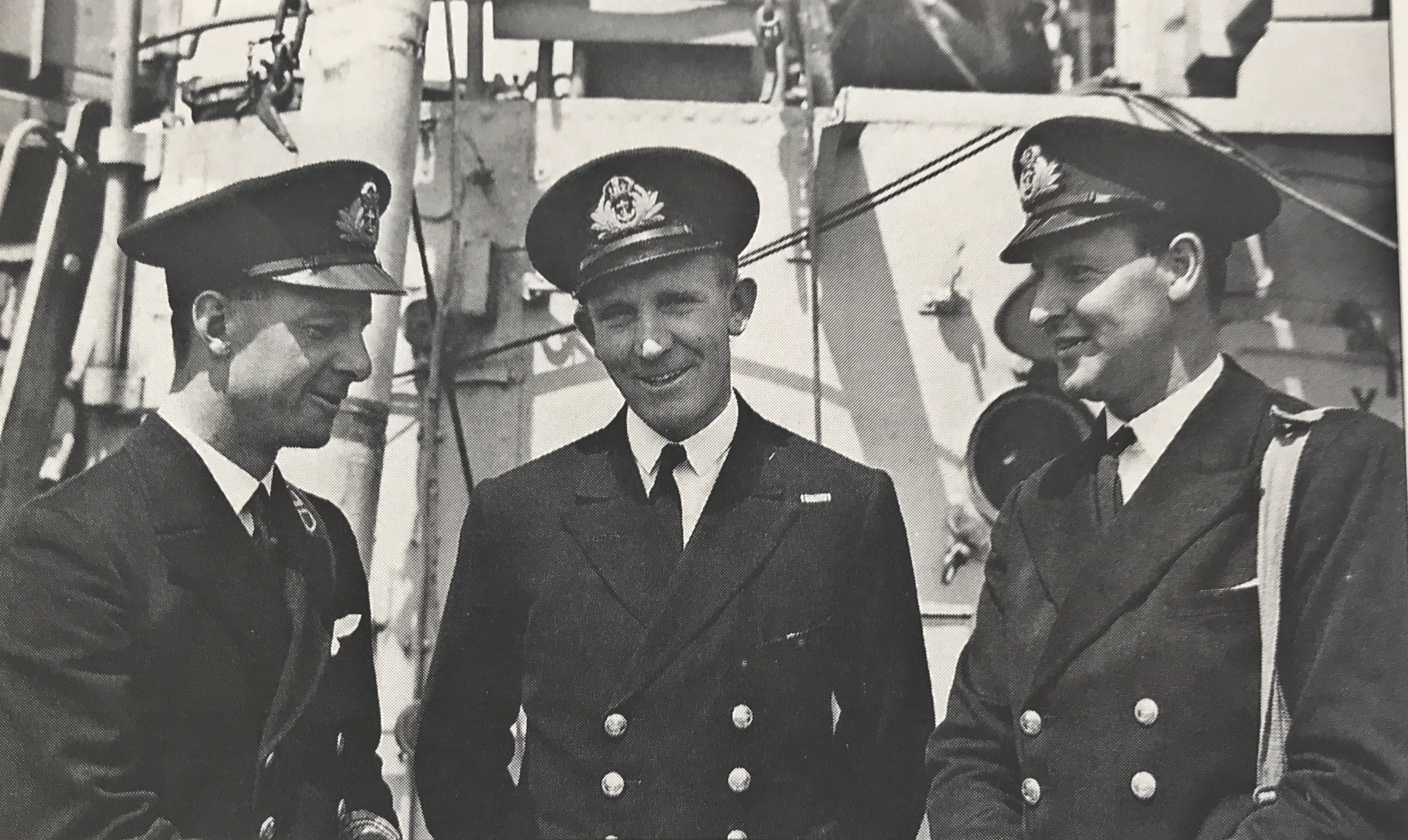
MND
VAdm DeWolf retired from the RCN in 1960, splitting his time between Bermuda and Ottawa in his later years before his death in 2000. His legacy as one of Canada’s naval heroes has lived on in a number of ways, including in his hometown of Bedford. In September of 1992, a large park on the Bedford Waterfront was named the Admiral Harry DeWolf Park, thanks to the suggestion of a number of former sailors who served under VAdm DeWolf during their careers. Members of the town recreation commission were in favour of the idea, and VAdm DeWolf himself was present when the park was officially opened and dedicated in his name – it remains a popular summer recreation spot in Bedford today.
Visitors to HMCS Haida, which is preserved as a museum ship and National Historic Site in Hamilton, Ontario, will also find plaques and informative displays recounting his time with the ship and his contributions to the RCN through his career. In late 2018 at a Parks Canada “Hometown Heroes” event held at CFB Halifax, VAdm DeWolf was again recognized, with his son Jim on hand to receive a plaque honouring his father’s service.
Now, with HMCS Harry DeWolf in active service and completing final trials, it’s ensured that VAdm DeWolf’s legacy will continue to serve as an inspiration to the next generations of RCN sailors as they patrol Canada’s North and conduct RCN business in the ship that bears his name.


